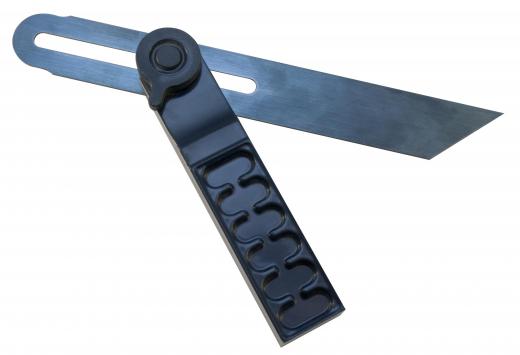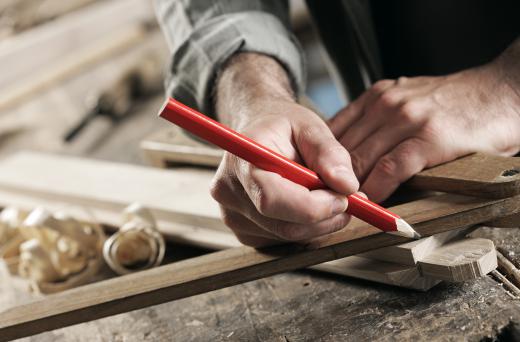In carpentry and woodworking, a compound angle is formed by cutting a piece of wood at an angle to both its horizontal and vertical planes. A simple miter cut is made at a specific angle relative to the edge of the workpiece, with the cutting blade itself plunging into the workpiece at a 90-degree angle. In other words, the blade itself remains perpendicular to the surface of the wood, while making a cut of between 0 and 90 degrees relative to the edge of the workpiece. The new edge exposed by the cut is called the bevel. When the cut has been designed to produce a bevel angle of other than 90 degrees relative to the wood's surface, the cut is a compound angle.
Compound angles are important components of many different structures, including such diverse things as buildings, crown molding, and picture frames. Many rooms, boxes and frames are irregular — that is, the walls or sides don't meet at 90-degree angles — and to ensure snugly-fitting joints, the ability to cut accurate compound joints reliably is essential. Furniture and other accessories, such as tapered display stands and planters, also rely heavily on compound angles in their construction. In addition, anything built with more than four sides, or fewer, will generally require compound angles at some point in their construction.

Cutting a compound angle is an operation best performed with a motorized or manual compound miter saw, although many carpenters and woodworkers can produce accurate compound angles in dimensional lumber with table saws. Compound angle cuts in larger pieces may require the use of a hand-held motorized circular saw. A motorized miter saw, also called a chop saw, uses a circular blade which, while spinning at high speed, is plunged into the workpiece. A manual miter saw incorporates a specially-designed guide to secure the workpiece with a guide for a back-saw, a hand saw made specifically for cutting miters. The back-saw guide is set to both the miter and bevel angles and secured. Specially designed wood or plastic miter boxes, with pre-cut slots corresponding to some popular miter angles such as 15, 22.5, 30 and 45 degrees, as well as 90 degrees, are also available, but rarely can be used to produce a compound angle with any accuracy.

When using a compound miter saw, cutting an accurate compound angle is simply a matter of calibrating the miter and bevel angle settings carefully when those angles are known; otherwise, formulas are available to calculate those angles. Cutting accurate compound angles with a table saw or hand-held circular saw will require the use of clamps, fences, and jigs. These accessories are set according to the use of fairly complex compound angle formulas.
